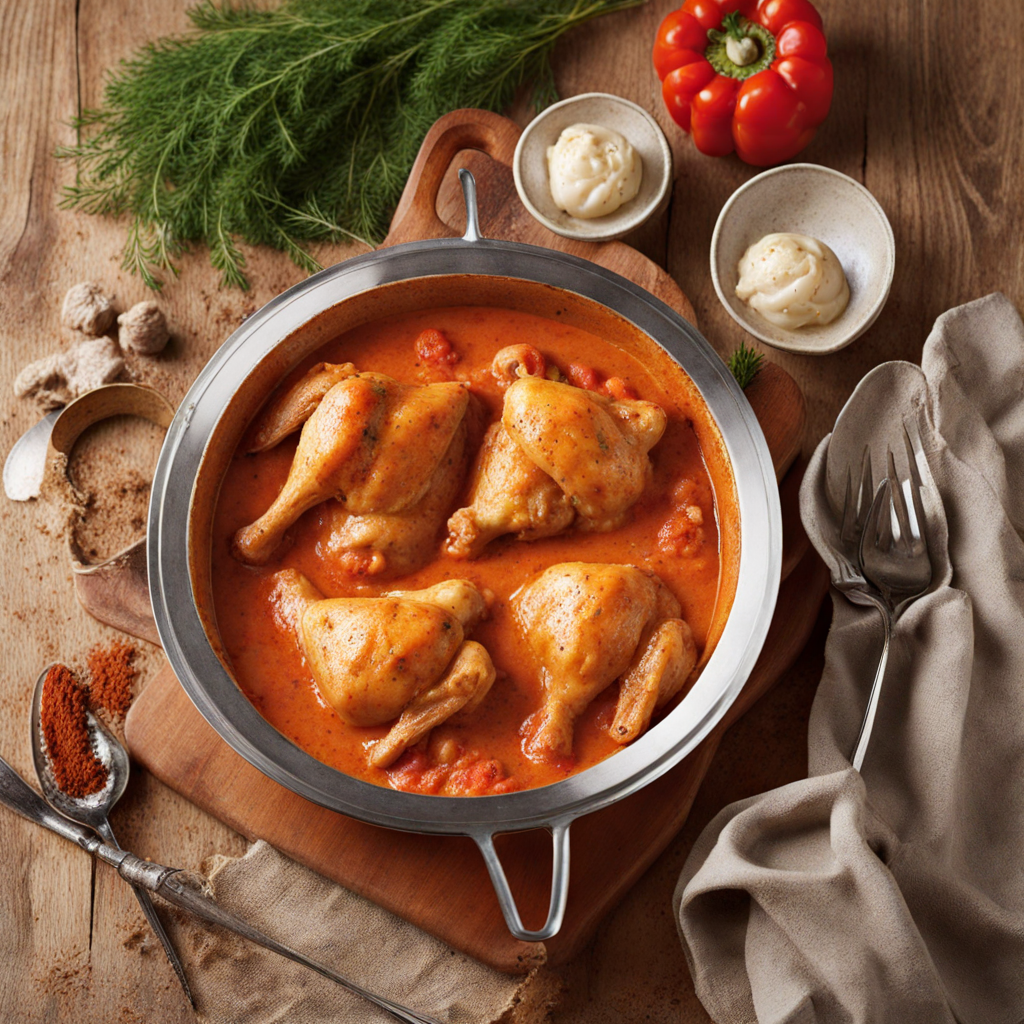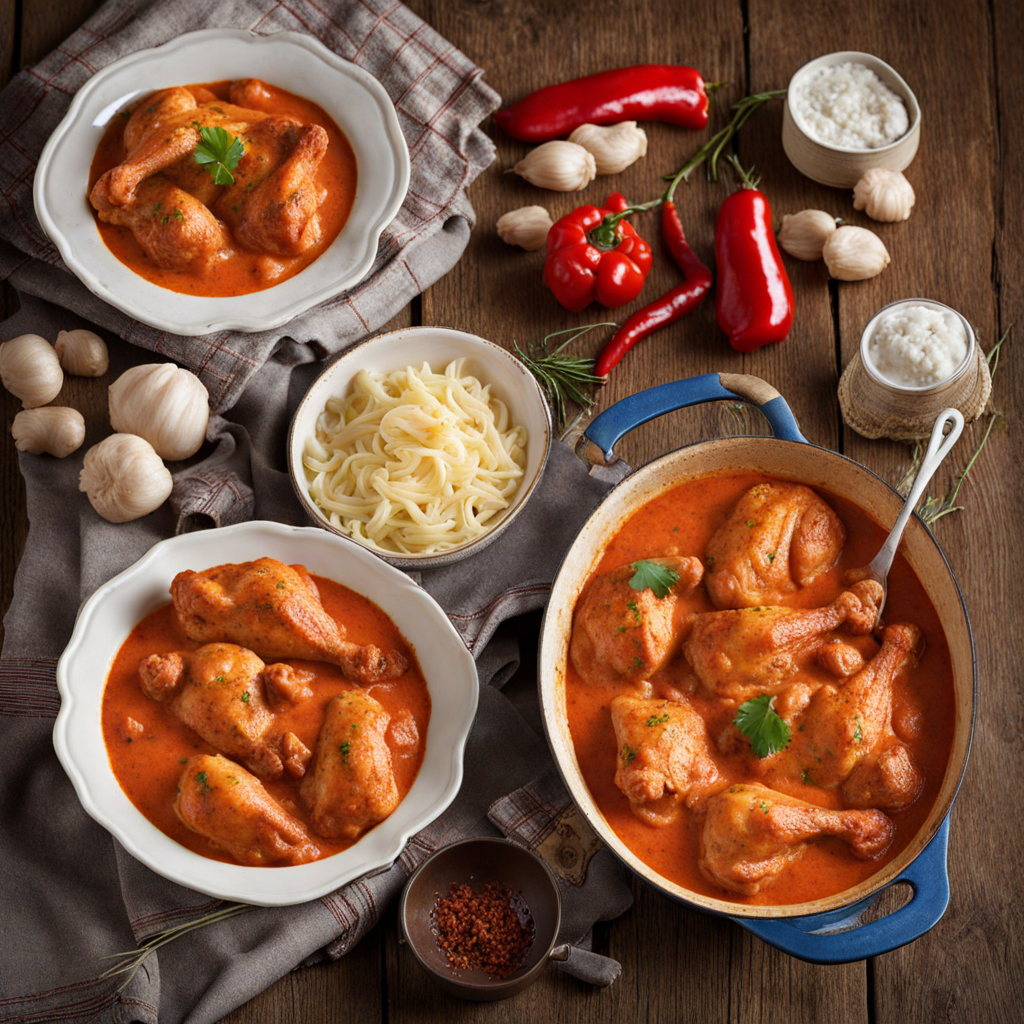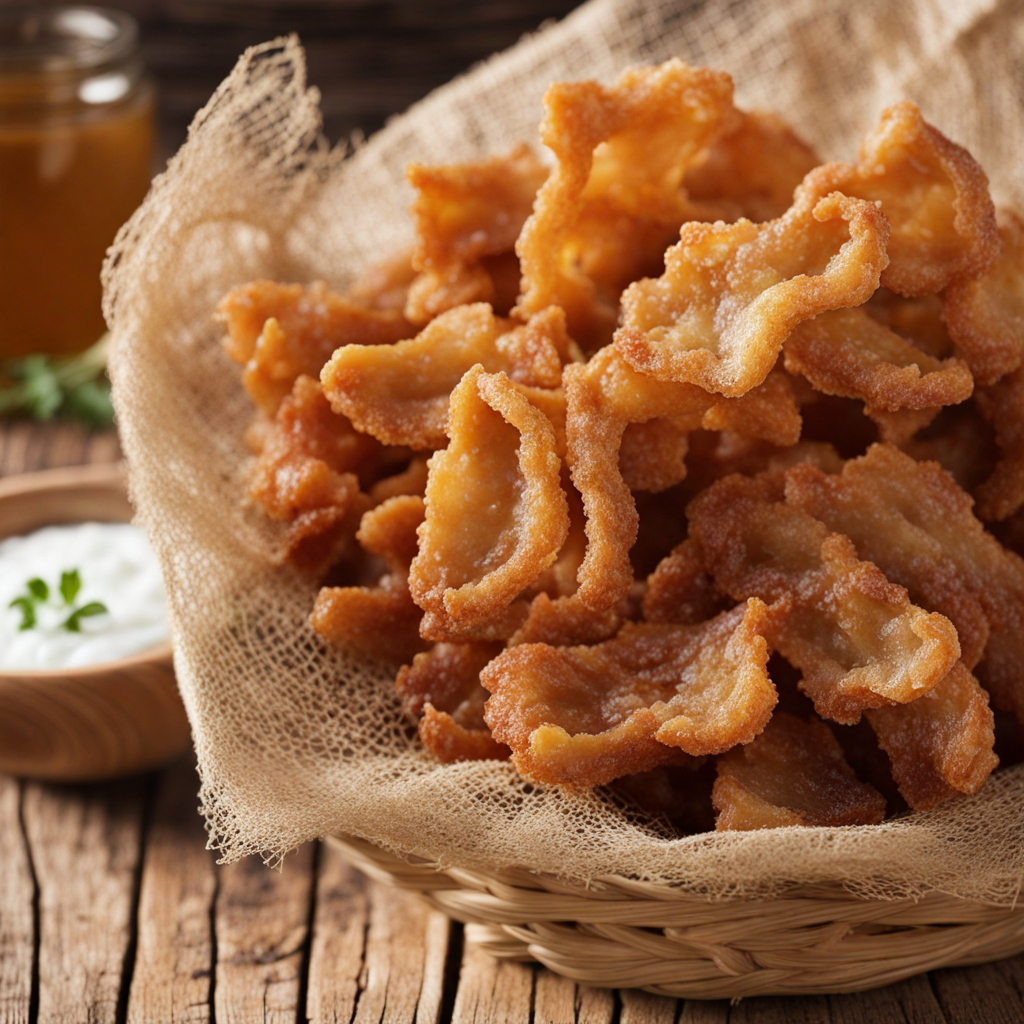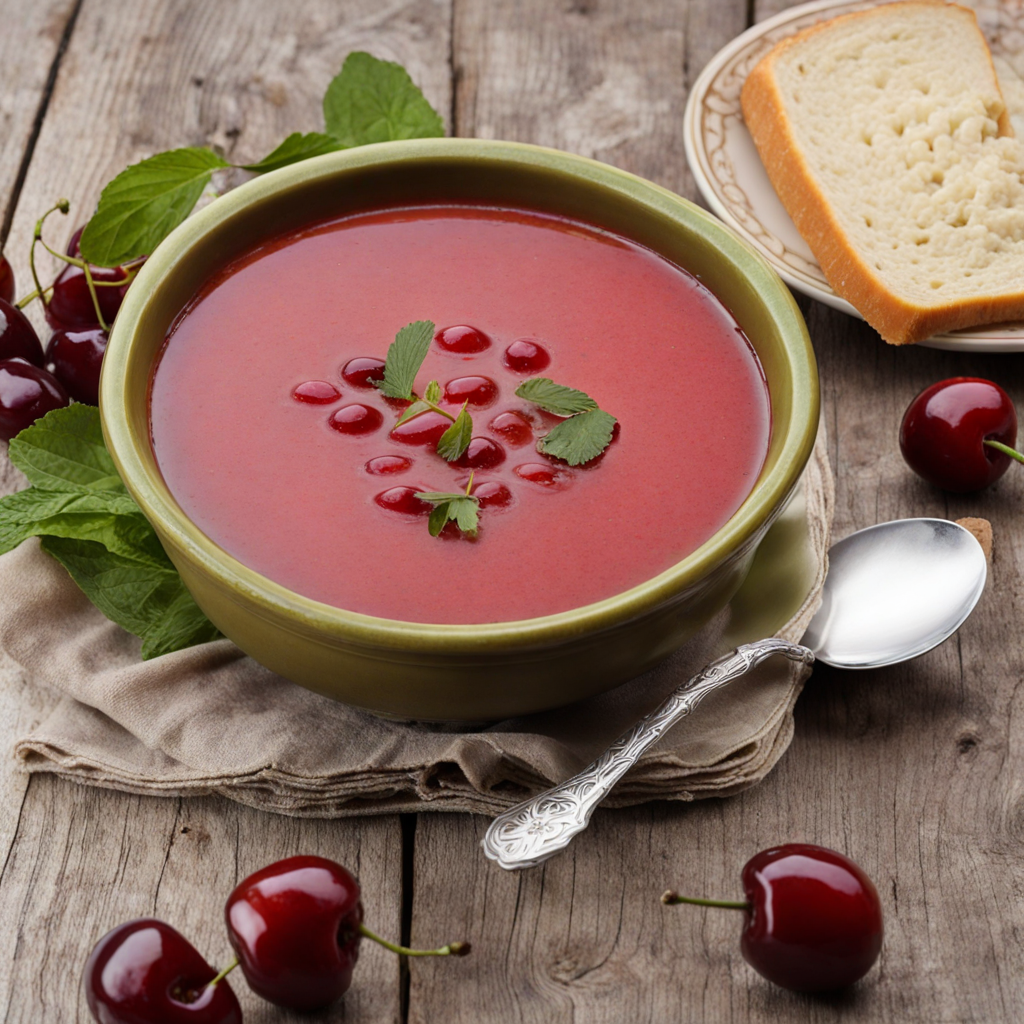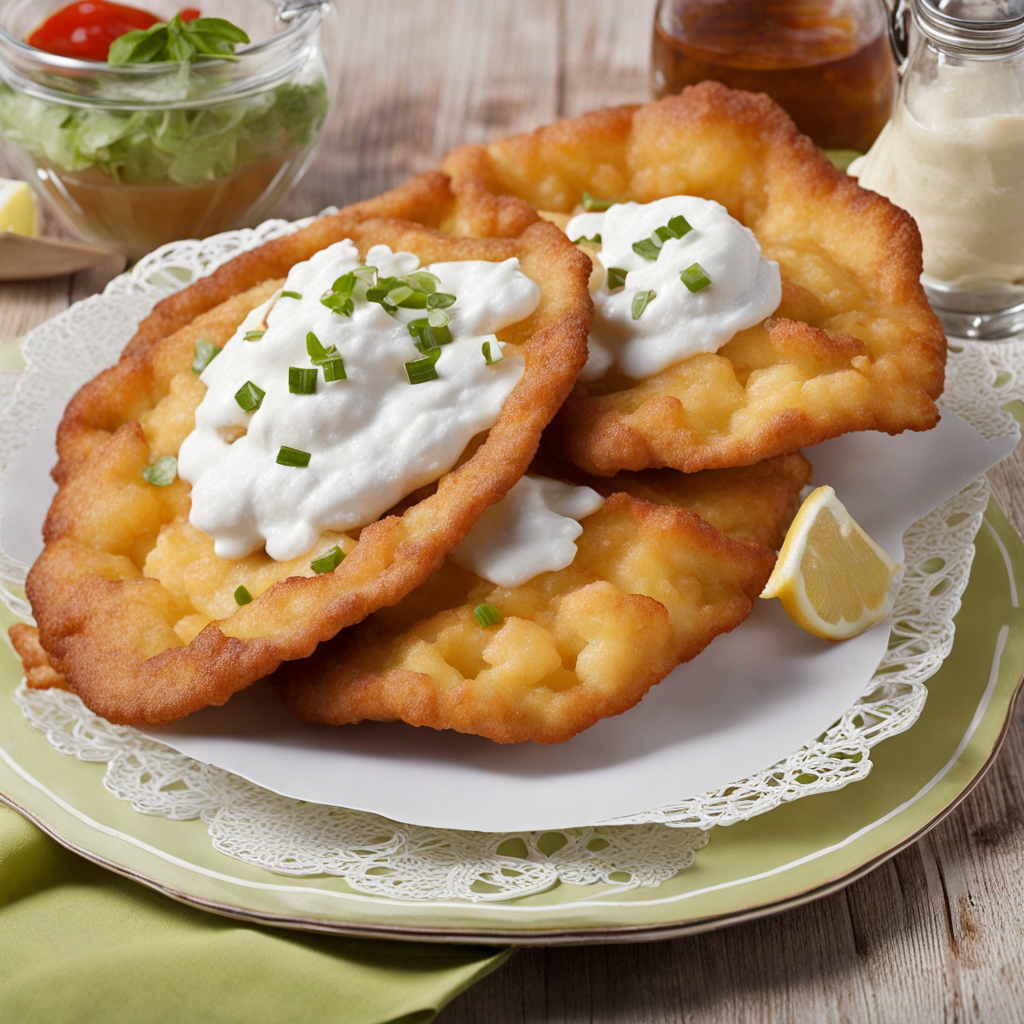Chicken Paprikash
Chicken Paprikash is a quintessential Hungarian dish that showcases the rich and vibrant flavors of paprika, a spice that is central to Hungarian cuisine. The dish typically features tender chicken pieces, often simmered to perfection in a luscious sauce made from onions, tomatoes, and a generous amount of sweet paprika. This combination not only infuses the chicken with a warm, reddish hue but also envelops it in a comforting, aromatic sauce that is both savory and slightly sweet, creating a delightful balance that excites the palate. As the chicken cooks, it absorbs the spices and flavors, resulting in a dish that is hearty and satisfying. The traditional method involves browning the chicken in lard or oil, which adds depth to the flavor profile. Once the chicken is cooked through, sour cream is often stirred in to create a creamy texture that contrasts beautifully with the spiced sauce. This addition gives Chicken Paprikash its characteristic richness, making it an ideal dish for those who enjoy comforting, home-cooked meals. Chicken Paprikash is typically served with a side of nokedli, which are Hungarian dumplings resembling spaetzle. These dumplings are perfect for soaking up the delicious sauce, ensuring that every bite is filled with flavor. The combination of tender chicken, vibrant paprika, and creamy sauce, all paired with soft dumplings, offers a unique culinary experience that transports you to the heart of Hungary. Whether enjoyed at a family gathering or a cozy dinner, Chicken Paprikash is a dish that embodies the spirit of Hungarian hospitality and tradition.
How It Became This Dish
The History of Paprikás Csirke: A Hungarian Culinary Gem Paprikás Csirke, or Chicken Paprikash, is a dish that epitomizes Hungarian cuisine, weaving together a rich tapestry of history, culture, and flavor. This beloved dish, characterized by its creamy paprika sauce, tender chicken, and often served with dumplings or egg noodles, is a testament to Hungary’s agricultural heritage and the influence of various cultures throughout its history. #### Origins: A Culinary Intersection The origins of Paprikás Csirke can be traced back to the 18th century in Hungary, a time when the country was part of the Habsburg Empire. The introduction of paprika, a spice derived from Capsicum peppers, played a crucial role in shaping Hungarian cuisine. Paprika was brought to Hungary from the New World, and its cultivation began in the 16th century, primarily in the southern regions of Hungary, such as Szeged and Kalocsa. These areas became known for producing high-quality paprika, which would eventually become a cornerstone of Hungarian cooking. The dish itself likely evolved from earlier stews that utilized chicken, a common ingredient in many cultures. Various cooking techniques from neighboring countries, particularly the Austrians and Slovaks, influenced its preparation. The traditional method of slow-cooking chicken with onions and spices gradually incorporated the characteristic paprika, which added both flavor and color to the dish. #### Cultural Significance Paprikás Csirke is more than just a meal; it is a cultural symbol of Hungarian identity. It reflects the agricultural bounty of the region and the importance of communal dining in Hungarian culture. The preparation of the dish often involves family gatherings, where recipes are passed down through generations. Each family may have its own variation, incorporating local ingredients or personal touches. The dish holds a special place in Hungarian cuisine, often served during festive occasions, family gatherings, or Sunday dinners. It embodies the spirit of hospitality, with its vibrant colors and rich flavors inviting friends and family to share a meal together. The use of paprika, which is a symbol of pride for Hungarians, underscores the dish's significance. It is often said that no Hungarian meal is complete without the warmth and color of paprika. #### Development Over Time As Hungary progressed into the 19th and 20th centuries, Paprikás Csirke continued to evolve. The industrial revolution brought changes in agriculture, making chicken more accessible to the average household. The dish became a staple not only in rural areas but also in urban settings, where it could be found in restaurants and homes alike. During the Austro-Hungarian Empire, culinary exchanges flourished, and Paprikás Csirke began to gain recognition beyond Hungary’s borders. The dish was featured in various cookbooks and culinary guides, showcasing its versatility and appeal. The introduction of sour cream into the recipe added a creamy texture that complemented the spiciness of the paprika, creating a harmonious balance that would become a hallmark of the dish. In the post-World War II era, as Hungary faced political and economic changes, traditional dishes like Paprikás Csirke became symbols of national pride. The emphasis on traditional cooking methods and local ingredients saw a resurgence in interest in Hungarian cuisine. The dish was often prepared during national holidays and celebrations, reinforcing its status as a culinary icon. #### Modern Interpretations and Global Influence In recent years, Paprikás Csirke has gained international recognition, appearing on menus around the world as a representative dish of Hungarian cuisine. Chefs and home cooks alike have embraced the dish, experimenting with variations that incorporate different spices, proteins, and cooking techniques. Some have introduced elements such as roasted vegetables, while others have created vegetarian versions using mushrooms or tofu. The global interest in Paprikás Csirke has also sparked a revival of traditional Hungarian cooking methods, with many people seeking to reconnect with their culinary heritage. Cooking classes and workshops focusing on Hungarian cuisine have proliferated, allowing enthusiasts to learn the intricacies of preparing this iconic dish. Moreover, the rise of food tourism has seen many travelers journeying to Hungary to experience authentic Paprikás Csirke in its homeland. Restaurants in Budapest and other cities now offer the dish in various interpretations, ranging from traditional recipes to modern culinary creations, ensuring that the spirit of this beloved dish remains alive and well. #### Conclusion Paprikás Csirke is more than just a dish; it is a celebration of Hungarian culture, history, and identity. Its roots in the agricultural practices of the region, combined with the influence of various culinary traditions, have shaped it into the beloved comfort food it is today. As it continues to evolve and adapt to modern tastes while retaining its core essence, Paprikás Csirke remains a cherished symbol of Hungarian hospitality and culinary artistry. In every bite of this rich, paprika-infused chicken dish, one can taste the history of Hungary—the struggles, the triumphs, and the enduring spirit of a nation that has embraced its culinary heritage. Whether enjoyed in a cozy kitchen in Hungary or a bustling restaurant far from its origins, Paprikás Csirke stands as a testament to the power of food to connect us to our history and to each other.
You may like
Discover local flavors from Hungary


